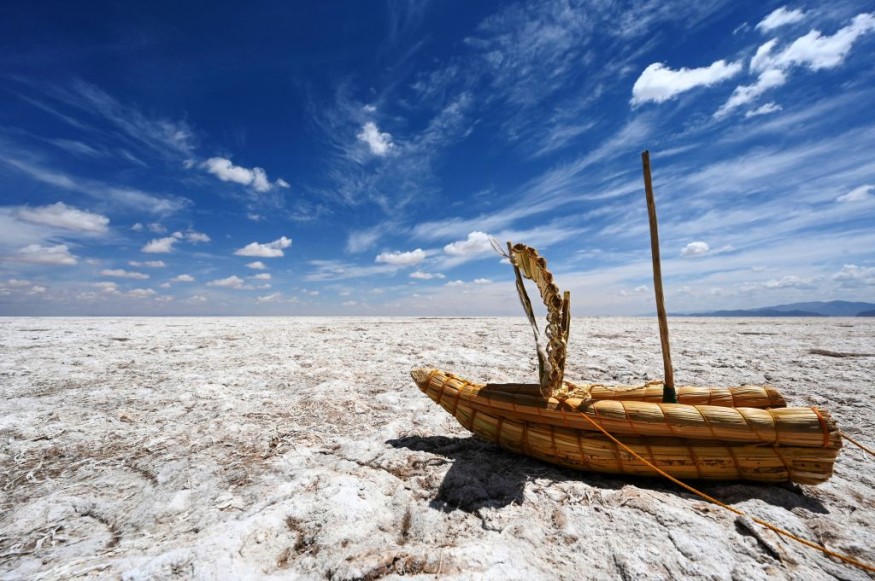Bolivia's "water people" now have no vital lifeline, which leaves their future uncertain. The Uru people relied on the lake and believed it would always be "a source of life," but after it abruptly vanished, the community is now left trying to figure out how to live and adjust to their new situation.

Source of Life
Bolivia's Lake Poopo used to be a source of life for the locals, but today, as a result of several things coming together, it is a desert with abandoned boats standing idly on eroded land. Life has been entirely turned upside down for Indigenous tribes who had been farming along its banks and fishing from the waters for more than a century.
Lake Poopo was 12,000 feet above sea level in the high-altitude altiplano region of southwest Bolivia. When the lake was at its largest in 1986, it covered over 1,350 square miles, more than the whole state of Rhode Island.
However, according to data from the European Space Agency, satellite photos have monitored the lake's depletion and reveal that, in 2015, Lake Poopo had "completely evaporated" due to climate change and water withdrawal for local mining and farming.
Suffering Water People

Felix Mauricio, a former fisherman from the Uru Indigenous tribe, told AFP while kneeling in a now-dry bed, "Here was the lake." It is now dried up.
Mauricio, now 82 years old, has resided in Punaca Tinta Maria, a community in Oruro's southwest. He told AFP that when Lake Poopo's water levels were at their highest, his grandparents moved there more than a century ago.
The Uru, who still refer to themselves as "water people," once fished for fish, hunted waterfowl, and existed off the lake's lush surrounding land. However, the Uru Indigenous community's people, who formerly lived off of the lake's natural resources, are departing now that it has dried up.
Our parents believed in Lake Poopo because it contained fish, birds, eggs, and everything else, according to Luis Valero, the spiritual head of the Lake Poopo Uru Indigenous group, who spoke to the AFP. Our wellspring of life was there.
There are just around 600 members of the Uru Indigenous population in Punaca Tinta Maria, according to a 2013 study.
The surviving Uru have had to develop their ability to adapt to their new surroundings.
According to Valero, many "water people" were compelled to work as bricklayers, miners, or day laborers. According to the Ag Marketing Resource Center, some individuals continue cultivating tiny crops like quinoa, a "drought resilient" plant (AGMRC).
Lake Poopo's final gift to the Uru is an extensive salt bed that has evaporated. The survivors have pooled their resources to purchase the machinery needed for a remote operation to mine and purify the salt that was left behind. However, the project failed when they could not come up with $500 to purchase the bags needed to package the salt.
Global Problem
Not only the Uru people are struggling with a lack of water. Water levels have drastically decreased in South America, the United States, and Europe during the past year. Water scarcity affects roughly one-fifth of the world's population, according to the United Nations (UN). Additionally, the UN predicts that by 2030, nearly half of the world's population will reside in regions with "high water stress" due to climate change.
For more environmental news, don't forget to follow Nature World News!
© 2025 NatureWorldNews.com All rights reserved. Do not reproduce without permission.





